Henry Holland’s super-striped ceramics collection for Paul Smith
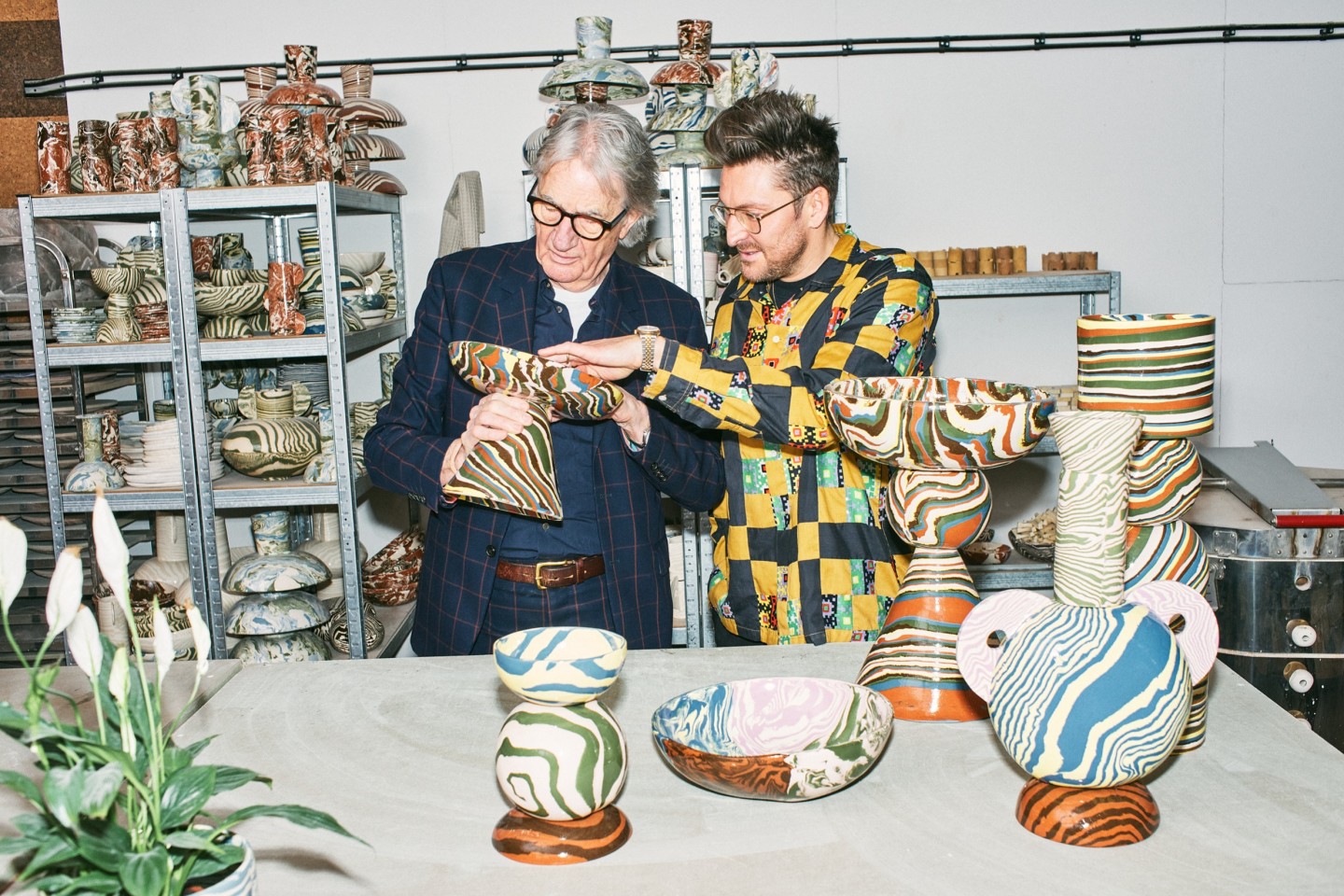
Roula Khalaf, Editor of the FT, selects her favourite stories in this weekly newsletter.
“I’ve always been interested in skills mastered by hand – carpentry, ceramics, painting – and when I went to Japan in the ’80s, I discovered and learned about so many techniques including raku and mino pottery, natural coloured clay as well as ash glazes,” says the British fashion designer and master shopkeeper Sir Paul Smith. “My interest in ceramics started in Japan and I began my own collection of mountain pots.” When Smith came upon the vibrant striped vessels crafted by the maker and former fashion designer Henry Holland, he was smitten and invited Holland to develop a special collection and one-off pieces for his Albemarle Street flagship to coincide with London Craft Week next month.
The duo first struck up a friendship when Holland came to meet Smith as part of a series of interviews for Vogue. The gregarious Holland, who studied journalism at London College of Communication, UAL, before setting up his fledgling fashion label, is a polymath talent. Like Smith, who left school at 15, he is largely self-taught and gained experience and skills through experimentation. “I’ve always been an admirer of Sir Paul’s work ethic, his clothes, his approach to luxury ‘with a wink’ and his ability to imbue his personality into his work so well. Paul has done that for 53 years and you still see a bit of him in every piece,” says Holland from his potter’s studio in east London.
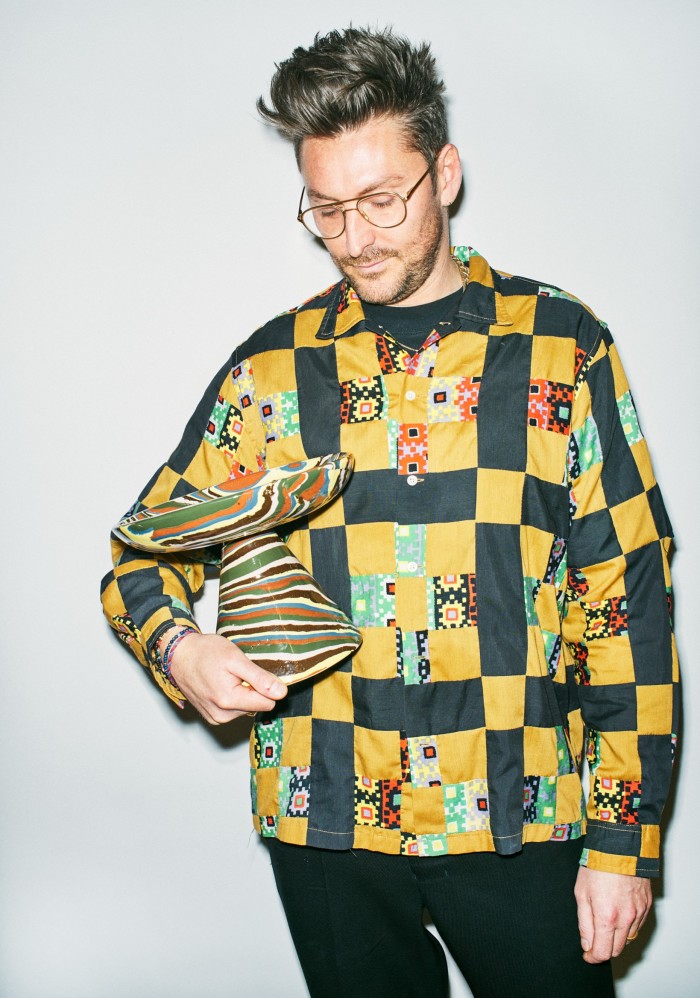
Holland’s transformation from fashion designer to ceramicist happened partly by chance and partly through frustration. After he closed his fashion label in 2020, he found himself missing the process and enrolled in pottery classes in Hackney. “I needed a creative outlet. I did not realise how much I got from the physical making of products,” he explains. He quickly caught the “ceramic bug” and began experimenting in all manner of processes, shapes, glazes and patterns.
“I stumbled across a Japanese technique called nerikomi that uses stacks of coloured clay. There is an intensity of colour that you cannot achieve through glazes. From there, I ran with it,” adds Holland, whose experience in fashion, production and retail gave him the smarts to get going at once. Holland’s collection is wonderfully esoteric, brightly coloured – and just that little bit skew-whiff. His trademark stripes, created from the stacks of clay, ripple over joyously animated tableware, vases and pots. “The design is always a little ‘wonky,’” he says. “I like to embrace the wobble, as it shows the piece is made by hand. There are certain techniques you can use such as slip casting, which creates a perfect product and it is what most of us buy as dinner plates. Nerikomi, by contrast, involves hand-building and is impacted by the way the clay reacts once in the kiln.”
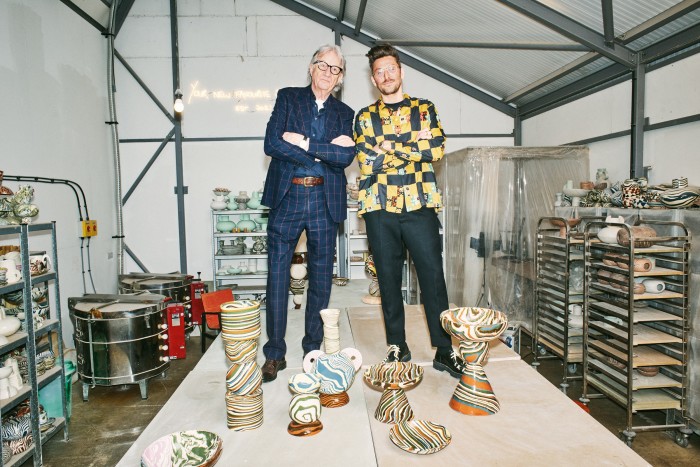
The shapes, with big handles, bold silhouettes and zany optical effects, have a distinct Memphis Group touch. The progressive art and architecture movement established by Ettore Sottsass in Milan in 1980 hovers in the background of both their imaginations and, indeed, their respective personal collections. “I have these cups by Peter Shire, who was one of the last guys who worked for the group, and I had Memphis pieces in the interiors collection at Albemarle Street,” says Smith. “Henry once bought a desk from us.”
Holland, who was raised by an antiques-dealer mother, has long been in tune with the appeal of both art deco and Memphis ceramics. “My mother would buy pieces that were cracked and spend time restoring and enjoying the lived life of these works,” he recalls. They both share a passion for ceramic masters including Bernard and David Leach and the delicate modernist forms of Lucie Rie.
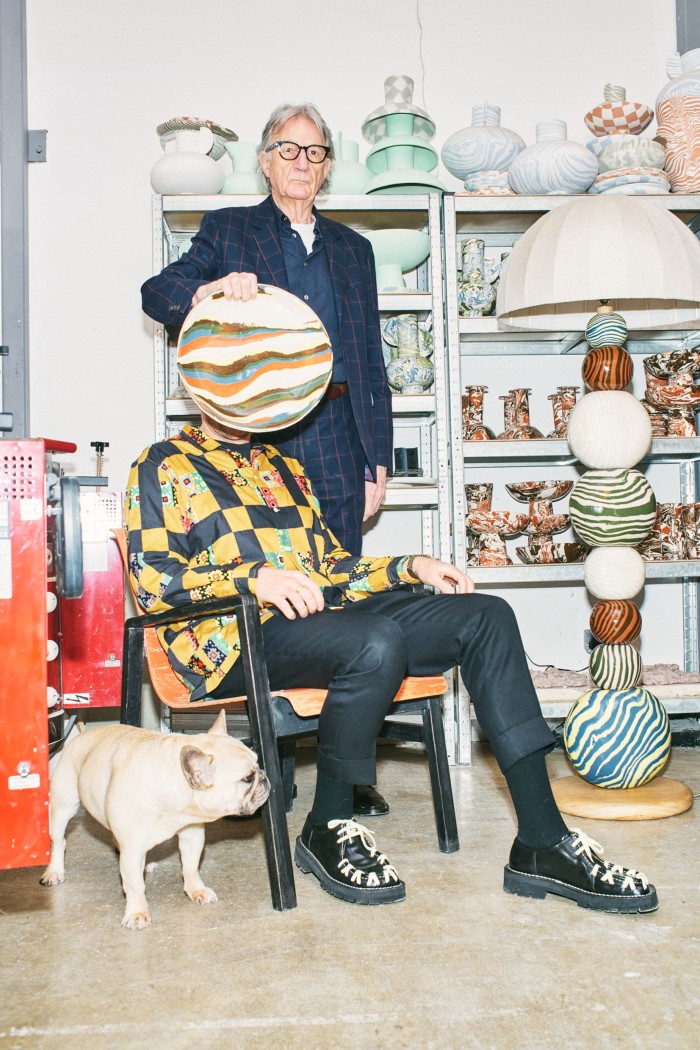
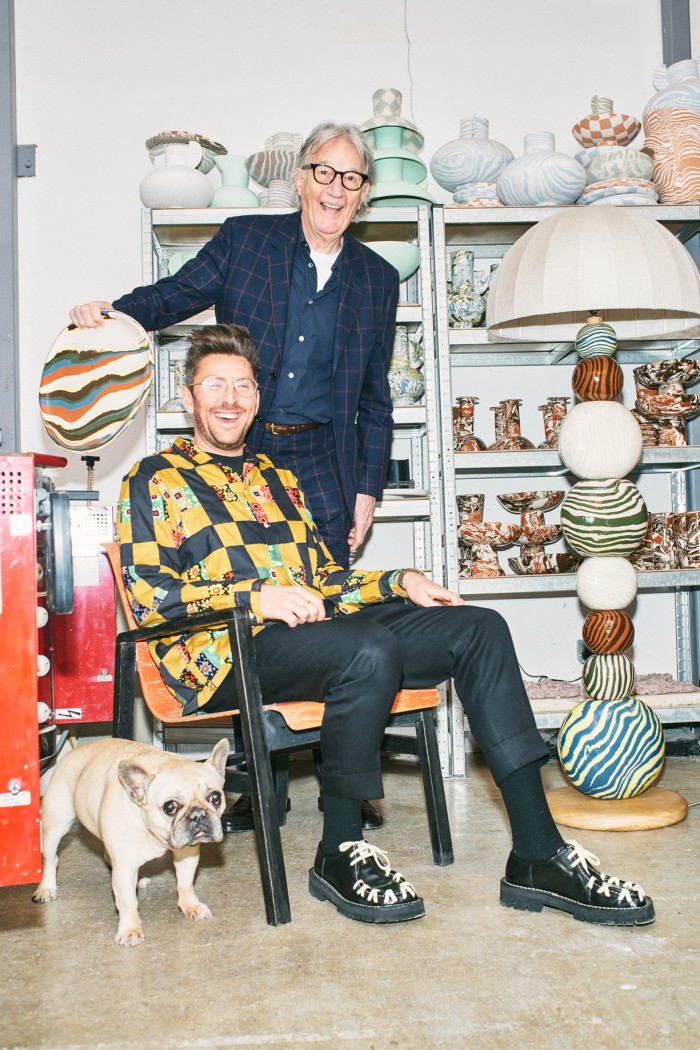
For the store, Holland has created striped table- and serveware as well as one-off lamps, sculptural stacks and objects inspired by the designer’s own penchant for stripes. Smith’s stripes have now become his trademark but, says the designer, he “hit on them by chance”. “When I started out in menswear, I would buy fabrics like white and blue or burgundy striped cottons for shirts. In the ’90s, as the business was growing, I had sufficient resources and orders to be able to develop my own stripes and I put more colour into them, creating vibrant patterns,” he reminisces. “They became super-popular to the point of being sold in 60 countries. The stripe became a logo in a way.” Smith continues to develop those stripes by wrapping coloured yarns around a piece of card to find new colour combinations. “Back then, hand-wrapping thread was the only way to do it as watercolours were too disperse and felt tips come in rotten colours,” smiles Smith, who introduced Holland to the process.
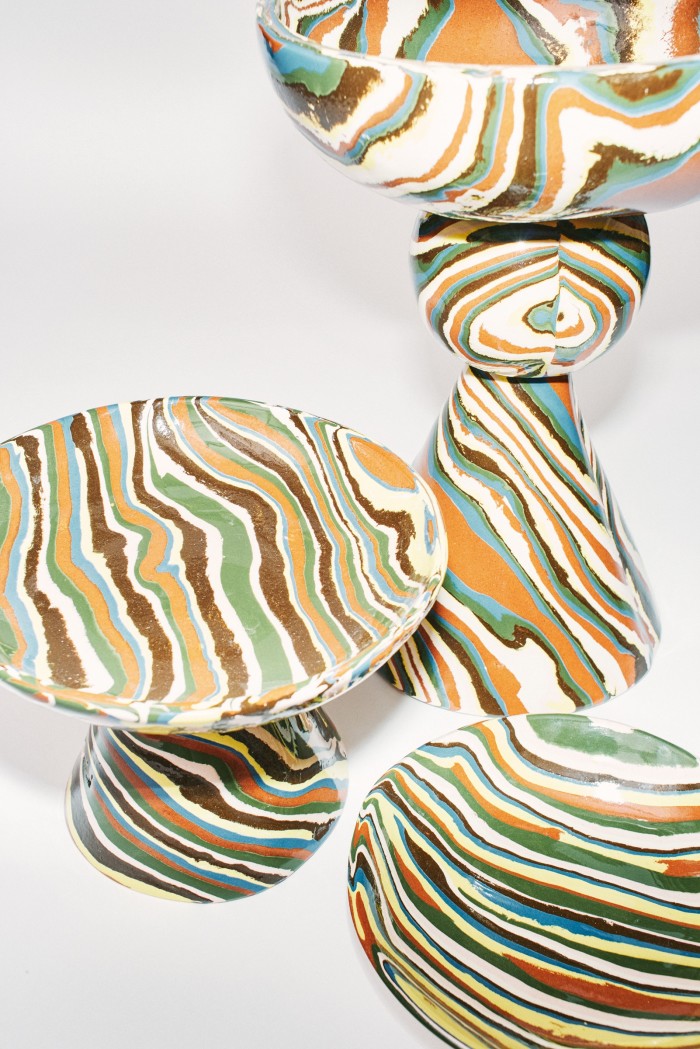
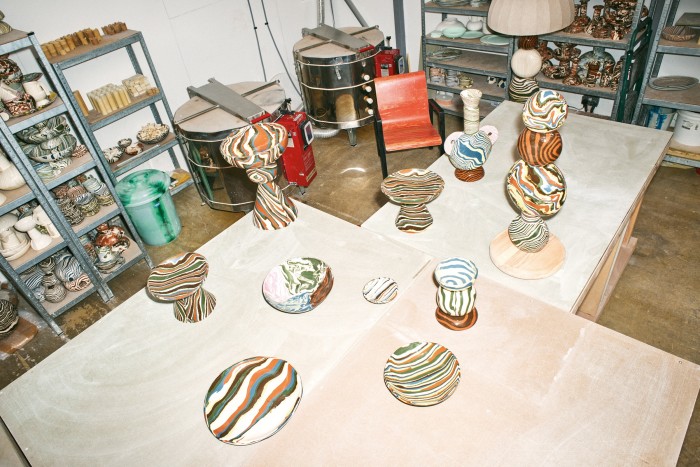
In just two years, Holland has made a big imprint on the ceramics market, receiving his first big order for 600 items from Liberty when he was still selling pieces on Instagram. Now, with his own studio set-up (into which he moved in 2021), he employs several makers whom he met during those early evening classes. “Within that same timeframe I would have designed and marketed around 10 fashion collections. The pace of fashion is frenetic but I’ve now found a middle ground,” Holland says. “It’s nowhere near the same frequency but having that background has given me a sense of pace.”
“It is exactly those ingredients you need to be successful and, frankly, just to survive,” says Smith, who started his own venture from a tiny shop in Nottingham. “It measured 3m x 3m and was only open on Friday and Saturday. I started showcasing tiny collections of things, be it ceramics, or posters or books, and because the shop was so tiny, it was a way of breaking the ice so customers could feel relaxed.” Likewise, 9 Albemarle Street was conceived as a showcase for whatever might take Smith’s fancy. “We are still blessed by being an independent company and we can be a little more self-indulgent. The shop can be whatever I want it to be, and it’s a treat to work with Henry and continue to run a shop that is full of surprises,” he says.
Beyond pots, the duo are united in their appreciation for creativity and for graft. “You never ‘make it’ in the creative world, and thank God for that. It is about today and tomorrow and you need to enjoy it 100 per cent or pack it in and go fishing,” concludes Smith.

Comments